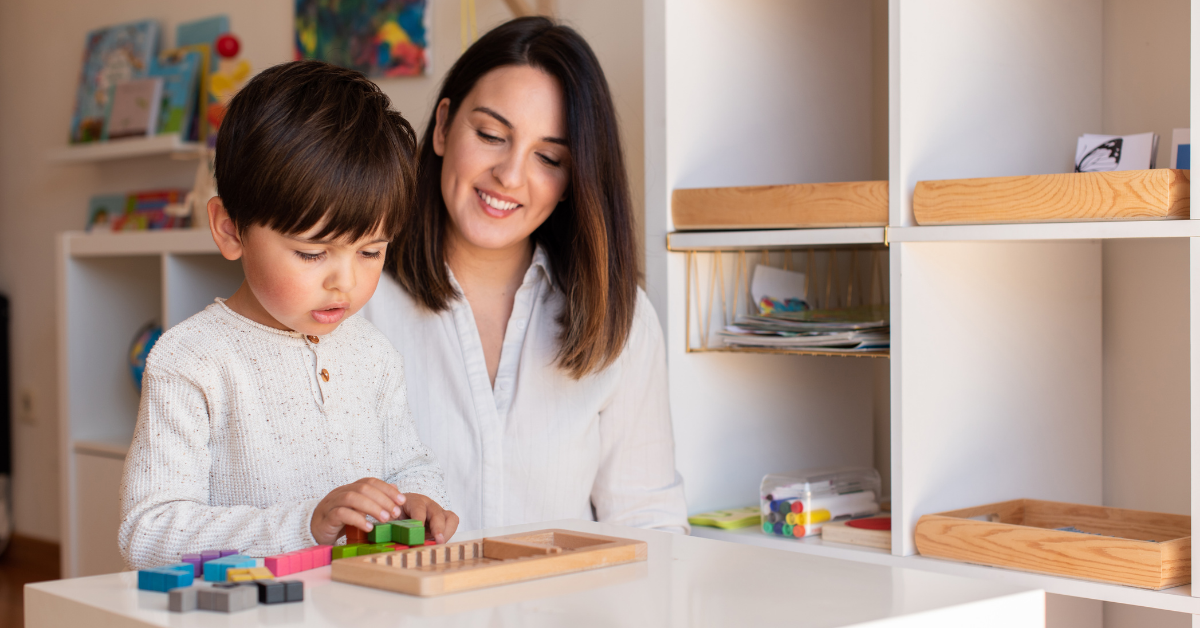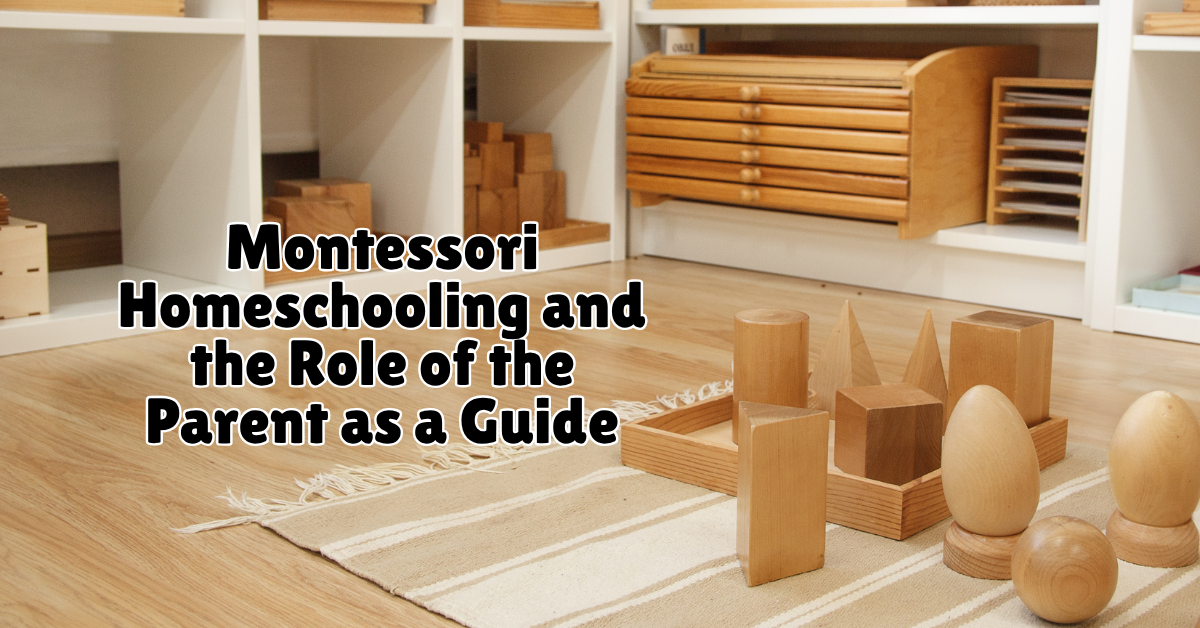Parents who choose Montessori homeschooling create a unique educational environment where their role is much more than just a traditional teacher. Instead of directing a child’s education from the front of a classroom, they act as a guide, helping their child explore and learn at their own pace. This approach demands intentional involvement, patience, and practical strategies to ensure your child thrives.
Below, we explore effective ways to become an empowered Montessori parent and practical tips for guiding your child’s homeschooling experience.
Understanding The Parent’s Role In Montessori Homeschooling
The Montessori method is based on the belief that children are naturally curious and capable of self-directed learning. However, this autonomy doesn’t translate to the absence of structure. That’s where the parent’s role comes in. You’re not there to dictate but to create an environment that encourages exploration, independence, and curiosity.
Here are key responsibilities Montessori parents should focus on:
- Design a prepared environment. Montessori learning thrives in thoughtfully arranged spaces that offer children freedom within boundaries. Your role is to provide tools and materials that align with their developmental stage and interests.
- Observe, don’t interfere. Montessori guides prioritize observation. Watch how your child interacts with their environment so you can tailor learning opportunities without imposing your expectations.
- Model behavior. The Montessori philosophy emphasizes leading by example. Demonstrate manners, organizational habits, and problem-solving skills you’d like your child to emulate.
- Encourage critical thinking. Instead of giving answers right away, ask open-ended questions to nurture your child’s problem-solving abilities.
By adopting these principles, you help instill a love for learning that goes beyond academic achievement.
Setting Up A Montessori Homeschool Environment
The Montessori classroom is often described as a “prepared environment” because it’s meticulously designed to meet the developmental needs of children. Preparing a similar setup at home is essential for effective Montessori homeschooling. Here’s what you need to focus on:
- Simplify the Space
- Declutter. Minimize distractions by removing unnecessary toys, electronics, or overly stimulating decorations.
- Organize materials. Use trays, baskets, or low shelves to make learning tools accessible.
- Prioritize natural elements. Bring in wooden furniture, plants, or materials like metal, glass, and fabric that offer sensory feedback.
- Select Montessori-Appropriate Materials
Montessori materials are hands-on and promote self-correction. While you don’t need to recreate an entire Montessori classroom, investing in some key items can make a big difference.
- Examples include:
-
- Sandpaper letters for learning phonics
-
- Golden beads for counting and understanding math concepts
-
- Knobbed puzzles for fine motor skill development
- Create Dedicated Learning Zones
Children thrive when they know what to expect. Divide areas into specific zones for activities like reading, art, and practical life skills (e.g., sweeping, cooking). Keep these spaces simple and child-friendly.
When your home is well-prepared, it gives your child the freedom they need to explore while providing the sense of order encouraged in Montessori education.

Daily Routines in a Montessori Homeschool
Consistency matters greatly in Montessori homeschooling. Developing a daily rhythm can help children feel secure and understand their role in learning. Start with a predictable schedule that includes blocks of uninterrupted work time, where your child can concentrate on chosen activities. For instance, begin the day with circle time or a family meeting to set intentions for the day. Encourage self-directed learning by letting your child choose the order of tasks within the blocks of time you’ve set aside. Remember, flexibility is key—you might shift focus based on your child’s interests on any given day.
Allow plenty of time for practical life activities, like cooking or gardening, which integrate seamlessly into Montessori principles. And don’t forget outdoor exploration—natural environments are perfect for hands-on learning and sensory discovery. Over time, these routines can become second nature and lay the foundation for independent, engaged learners.
Strategies For Practical And Emotional Guidance
Montessori homeschooling requires more than setting up a beautiful space. Your day-to-day interactions with your child play a critical role in their development. Here are strategies to help you guide your child effectively:
- Practice patience. Give your child the time they need to explore concepts or complete a task. Avoid rushing or interrupting their focus.
- Encourage independence. Offer tasks they can manage on their own. For example:
- Allow toddlers to dress themselves, even if it takes extra time.
- Provide older children with real responsibilities, like setting the table or measuring for recipes.
- Provide limited choices. Avoid overwhelming your child by offering two or three options instead of endless possibilities.
- Offer affirmation and encouragement. Focus on praising effort rather than results to build self-confidence and resilience.
- Balance freedom and boundaries. While Montessori encourages independence, clear expectations are equally important. For instance, teach your child to clean up materials before starting a new activity.
- Model emotional regulation. Show how to manage challenges without frustration. If your child struggles with a task, calmly talk through the process with them.
These small, consistent efforts not only guide your child academically but also prepare them for real-life problem-solving and collaboration.
Fostering a Montessori Mindset at Home
Montessori parenting goes beyond education—it’s a mindset you embed into your daily interactions. To foster this, engage with your child as an equal partner in learning. For example, if they show an interest in baking, use the opportunity to explain measurements, science concepts like temperatures, and the importance of sequencing. Avoid over-directing; instead, encourage their sense of curiosity by asking questions like, “What would happen if we added more water?” or “Why do you think the dough is sticky?” Keep in mind that mistakes are an essential part of growth.
Whether your child struggles with a math problem or spills flour on the floor, frame these moments as opportunities to learn. Cultivating this mindset helps your child see themselves as capable individuals who can approach challenges with confidence and creativity.
Common Challenges And How Parents Can Overcome Them
While Montessori homeschooling is rewarding, it’s not without its challenges. Being proactive about these hurdles will ensure smoother learning experiences for both you and your child.
- Balancing Structure and Flexibility
Striking the right balance between freedom and structure can be tough. If you find your child unfocused, try introducing simple boundaries:
- Use visual timers to set expectations for task completion.
- Incorporate Montessori work cycles, which typically last 2-3 hours with breaks in between.
- Gently redirect your child if they leave an activity unfinished—guide them back rather than scolding or insisting.
- Managing Parent Burnout
Homeschooling the Montessori way requires significant attention, energy, and planning. Here’s how to prevent burnout while staying engaged:
- Self-care first. Make time for rest, exercise, and hobbies outside of homeschooling.
- Delegate tasks. Include your partner or older siblings in teaching or household responsibilities.
- Join communities. Connect with other homeschooling families to share resources and tips.
- Limited Access to Montessori Materials
Sometimes, budget constraints or location can make purchasing Montessori materials difficult. You can still follow Montessori principles with household items:
- Use buttons for counting and sorting.
- Create alphabet cards by cutting letters out of sandpaper sheets.
- Incorporate everyday learning tools like measuring cups, sponges, and trays for practical life activities.
Facing these challenges head-on with patience and creativity will help you maintain a consistent, joyful homeschooling experience.
Guiding Your Child Toward Lifelong Learning
Montessori homeschooling emphasizes nurturing children as individuals who take ownership of their learning. By thoughtfully preparing their environment, fostering independence, and modeling a growth-oriented mindset, you set your child up for success not just academically but in all aspects of life. These small but intentional efforts remind us that education isn’t something that happens to children—it’s something they actively create for themselves with the guidance and support of a loving parent.
Empowering your child in this way ensures that their curiosity and thirst for knowledge will grow long after homeschooling ends.




